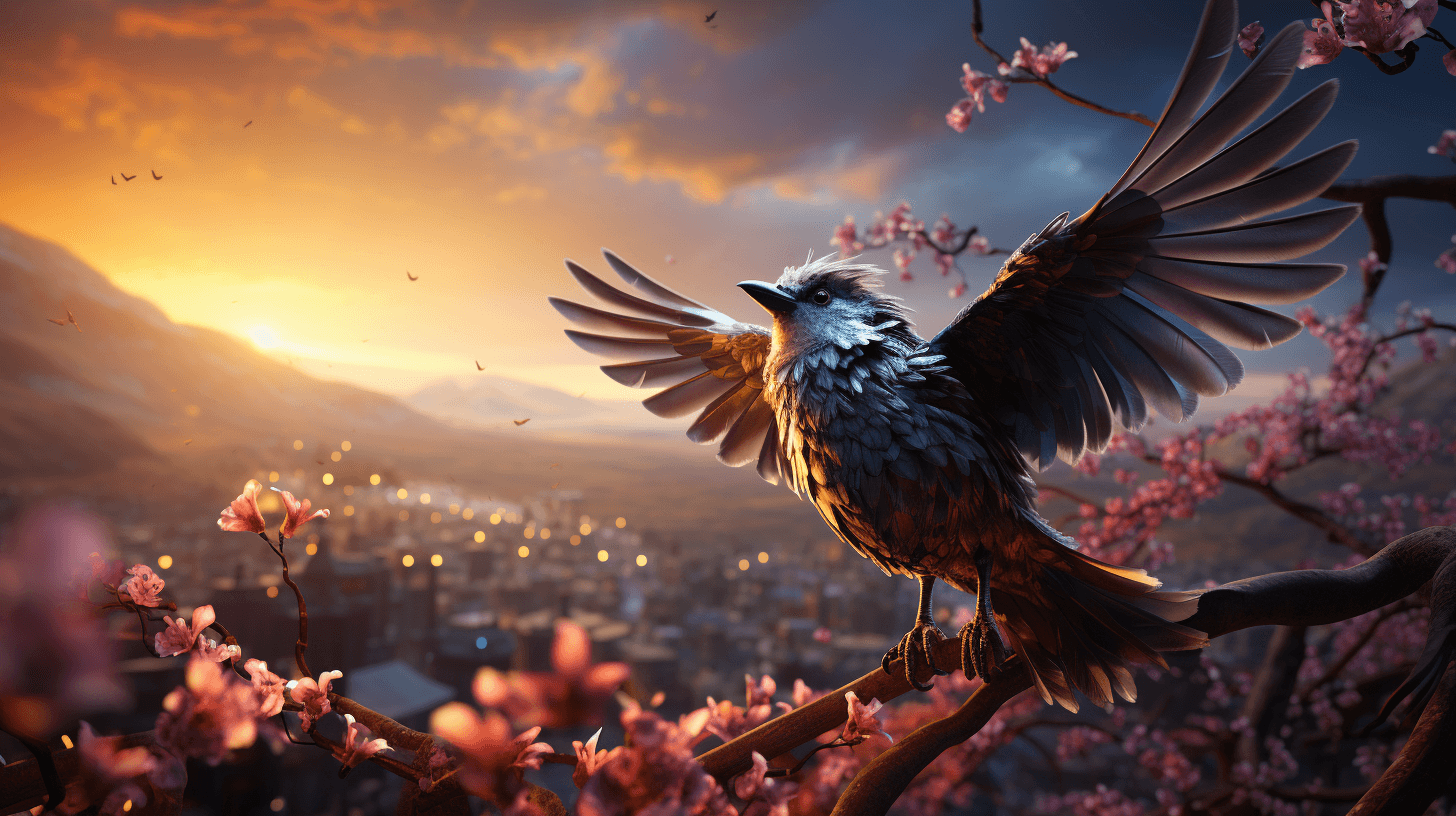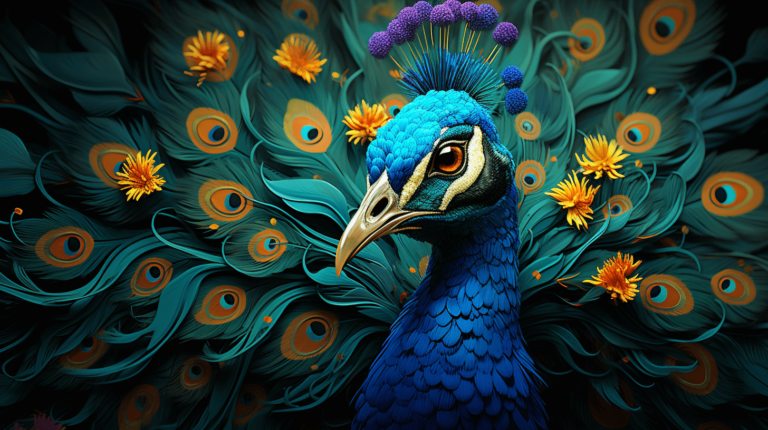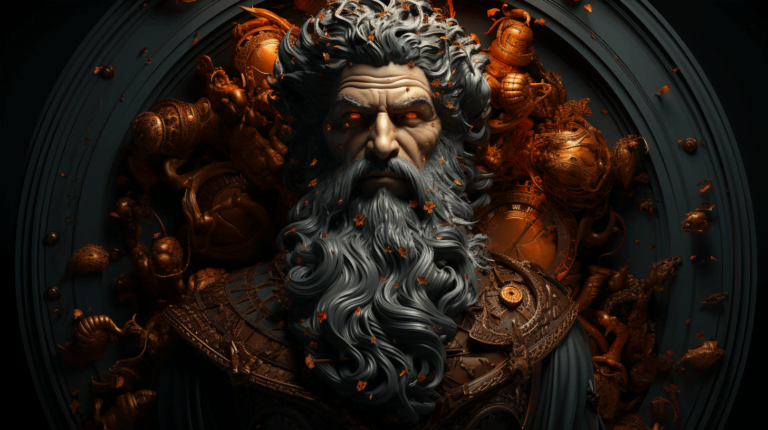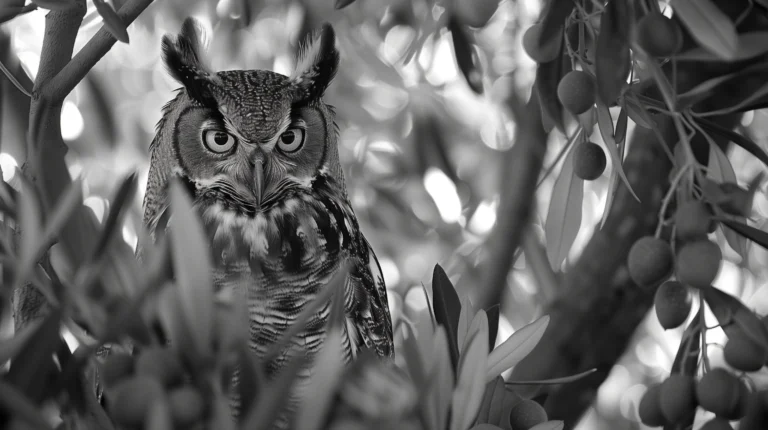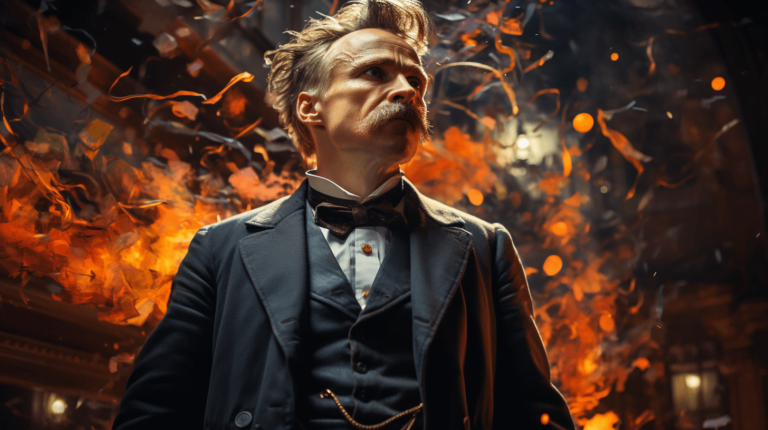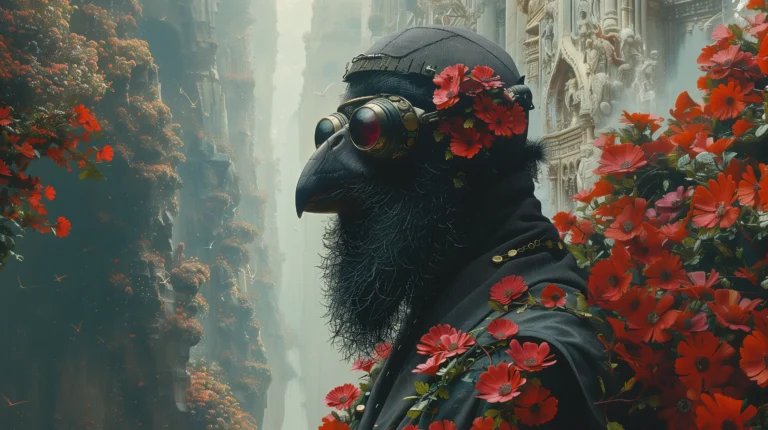Freedom to Live
“The unexamined life is not worth living.” – Socrates
Welcome to “Freedom to Live”, a journey of discovery that delves deep into the mysteries of life and death, change and constancy, self-realization, and the essence of true freedom. As readers, we embark on an exploration of the perennial truths that bind us all, an investigation into the fundamental underpinnings of existence. This exploration takes us beyond the boundaries of the known, into the realm of timeless wisdom and spiritual insight.
In this book, we delve into life’s profound paradoxes: its transience and permanence, the intricate dance of change, and the enduring truth of the Self. We explore death not as an end, but as an integral part of the cycle of existence, one that offers rebirth and renewal. In a world that seems ever-changing, we seek the unchanging, the eternal—the true nature of the Self.
Self-realization is at the core of our exploration—a transformative process that requires us to transcend our personal egos, our misconceptions of selfhood, and awaken to our true essence. Through this awakening, we glimpse the ultimate freedom: the freedom to live fully, unbounded by illusions or constraints.
This exploration spans diverse philosophical traditions, from Eastern wisdom encapsulated in Hinduism and Buddhism, to more Western philosophical concepts and even the reflections of modern science. Each tradition provides unique insights and perspectives on these enduring questions. From Hinduism’s teachings on Samsara and Atman, to Buddhism’s insights on impermanence and no-self, to the philosophical reflections on the nature of the universe and the human condition, each contributes valuable dimensions to our understanding.
“Freedom to Live” does not ask for passive reading. Instead, it invites you to question, ponder, and engage with the ideas and perspectives presented. As you navigate through the chapters, consider your own experiences and understandings, allowing for a deeper personal integration of these timeless truths.
As we embark on this journey together, we will uncover a richer understanding of our place in the cosmos, our journey through life, and the potential we hold for liberation and self-realization. It is a journey of liberation from illusion, awakening to our true nature, and ultimately, the freedom to live. Let us begin this journey, guided by the wisdom of the ages, the questions of the present, and the potential for a future of profound understanding and freedom.
As Rumi, the 13th-century Persian poet, beautifully encapsulates this concept:
“Why do you stay in prison when the door is so wide open? Move outside the tangle of fear-thinking. Live in silence.”
Chapter 1:
The Nature of Life and Death
“Life is a series of natural and spontaneous changes. Don’t resist them; that only creates sorrow. Let reality be reality. Let things flow naturally forward in whatever way they like.” – Lao Tzu
Life as a Battlefield: A Struggle for Survival
We begin our exploration with the metaphor of life as a battlefield. This metaphor encapsulates the essence of survival in the natural world and the existential struggles of human life. Every day, organisms vie for resources, compete for mates, and engage in an intricate dance of survival. In human life, this battlefield extends beyond the physical; it includes our mental and emotional landscapes. We grapple with personal and societal challenges, confront ethical dilemmas, and navigate complex interpersonal dynamics.
On this metaphorical battlefield, survival can often mean the end for another, a fact that is perhaps most starkly evident in the natural world. Predators hunt prey, plants compete for sunlight, and microorganisms wage invisible wars. This seemingly harsh reality underscores a profound truth: life is a dynamic, interconnected web. In this grand tapestry, life and death are intimately intertwined, each enabling the other in the ceaseless rhythm of existence.
The Moral Implications: The Ethics of Survival
Such a view of life and death naturally raises significant moral questions. If survival often requires the demise of others, how does this impact our ethical perspective? Can life’s inherent violence be reconciled with a moral and compassionate worldview?
A deep exploration of these questions pushes us to redefine our understanding of survival and competition. In human societies, survival is not just a biological concept but extends to our actions, decisions, and attitudes. It invites us to recognize our interconnectedness and our shared journey on this vast battlefield of life.
Rather than promoting a ruthless struggle, acknowledging our interconnectedness can foster empathy, respect, and cooperation. It can also highlight the critical role of balance—in nature and human societies alike. For instance, predation, often viewed as a cruel aspect of nature, plays a crucial role in maintaining ecological balance. Similarly, challenges and competition in human life can stimulate growth, innovation, and progress.
However, this doesn’t diminish the importance of ethical considerations. Recognizing life’s intricate dynamics can inspire us to strive for fairness, justice, and kindness in our interactions. It urges us to remember that our survival and well-being are intrinsically linked to the well-being of others and the world around us.
Samsara: The Cycle of Life, Death, and Rebirth
Our understanding of life and death expands further as we explore the concept of Samsara. Rooted in Hindu, Buddhist, and Jain philosophies, Samsara refers to the endless cycle of birth, death, and rebirth. Rather than viewing life and death as finite endpoints, Samsara sees them as transient stages in an eternal journey.
This perspective brings a radical shift in our understanding. Death is no longer a final end, but a passage leading to a new beginning. Life, too, transforms from a one-time event to an ongoing opportunity—an opportunity to learn, to grow, to evolve.
The cycle of Samsara encourages us to view life and death not as adversarial forces, but as complementary aspects of existence. It reminds us that change and transformation are integral to life, even as we partake in an eternal, unending journey. The concept of Samsara thus bridges the gap between the temporal and the eternal, offering a holistic vision of life and death.
Conclusion
In exploring life as a battlefield, pondering the ethics of survival, and understanding Samsara, we gain a deeper, richer understanding of life and death. We see that they are not simply polar opposites but integral parts of an interconnected cycle. This understanding offers us a more nuanced perspective on our existence, inviting us to live with greater awareness, empathy, and courage. As we navigate our own battlefield, we are better equipped to face our struggles, embrace our growth, and celebrate the complex, beautiful tapestry of life.
As Albert Camus, the philosopher, beautifully encapsulates this concept:
“In the midst of winter, I found there was, within me, an invincible summer. And that makes me happy. For it says that no matter how hard the world pushes against me, within me, there’s something stronger – something better, pushing right back.”
Chapter 2:
The Realm of the Self
“Knowing others is intelligence; knowing yourself is true wisdom. Mastering others is strength; mastering yourself is true power.” – Lao Tzu
Constructing the Self: The Illusion of Permanence
As we continue our exploration, we turn our focus inward to the realm of the Self. The Self, as we usually perceive it, is a collection of thoughts, experiences, memories, and beliefs that we identify as ‘me’. We take our experiences, our successes, our failures, our dreams, and our fears, and weave them into a narrative that forms our personal identity. This constructed Self offers a sense of continuity and stability amid the flux of life.
Yet, this stability is largely illusory. Our thoughts and emotions are in constant flux. Our memories shift and change over time. Our bodies, too, are continually regenerating and transforming. Despite our yearning for permanence, change is the only constant in our lives. In constructing a static sense of self, we often overlook this fundamental reality.
The Ramifications of Self-Deception: Misunderstanding Our Nature and the Universe
The creation of a false, unchanging self can lead to numerous misunderstandings and difficulties. By clinging to a fixed notion of who we are, we limit our ability to grow, adapt, and evolve. We become resistant to change and fearful of anything that challenges our self-perception.
This self-deception can also lead to a profound misunderstanding of our place in the universe. We may feel separate and isolated, failing to recognize our interconnectedness with the world around us. We may see ourselves as static beings in a dynamic cosmos, forgetting that we, too, are part of the cosmic dance of change and transformation.
Additionally, this illusion can create a profound sense of dissatisfaction and suffering. As we strive to maintain our constructed self, we might find ourselves in a constant battle against the inevitable changes in our lives. This battle can lead to feelings of fear, stress, and unhappiness, further disconnecting us from the true nature of our being.
Embracing Impermanence: The Transient Body and the Enduring Self
In contrast to the illusion of a static self, various philosophical and spiritual traditions emphasize the concept of impermanence, the continuous flux and change inherent in existence. This concept extends to our personal identities, suggesting that the Self, much like everything else in the universe, is in a state of constant transformation.
This perspective invites us to view our physical bodies as transient vessels, subject to the laws of nature and time. Our bodies grow, change, age, and eventually perish, reflecting the impermanent nature of physical existence.
However, recognizing the impermanence of the body and the constructed self does not imply nihilism or the negation of identity. Instead, it points to an enduring Self beneath the changing layers of identity—a Self that partakes in the process of change without being consumed by it.
This enduring Self is not defined by transient thoughts, feelings, or physical attributes. Instead, it represents our fundamental essence, our innate capacity for awareness and experience. This Self is a thread of consciousness that weaves through the tapestry of our lives, unchanging amid the flux.
Understanding this concept offers a liberating perspective. It allows us to engage fully with life, embracing change without fear or resistance. It invites us to let go of limiting self-concepts, opening the way for growth, transformation, and self-realization.
Conclusion
The exploration of the impermanent self deepens our understanding of who we are and our place in the cosmos. It challenges our deeply held beliefs about identity and invites us to embrace a more fluid, dynamic sense of Self. In doing so, we open ourselves to the fullness of existence, engaging with life in all its beauty and complexity. This understanding offers a path to freedom—freedom from fear, from illusion, and ultimately, the freedom to truly live.
As Carl Gustav Jung, the Swiss psychiatrist and psychoanalyst, beautifully encapsulates this concept:
“The privilege of a lifetime is to become who you truly are.”
Chapter 3:
The Journey of the Self
“The soul is neither born, and nor does it die.” – Bhagavad Gita
The Atman’s Odyssey: Navigating Through Samsara
In the grand theater of existence, we commence Chapter 3 by focusing on the central protagonist – the Atman, or the Self. Imagine life as a vast stage where countless characters come and go, each playing their part in the grand narrative. Yet, behind these diverse roles and personas, there exists a consistent ‘Self,’ akin to an actor donning and discarding different costumes.
Samsara, the cycle of life, death, and rebirth, is akin to this constant change of attires. Our bodies, emotions, thoughts, and experiences are like costumes that the Atman wears throughout its endless journey. Each incarnation represents a new ‘costume,’ offering unique opportunities for growth, learning, and experience.
With every change, with every transition from one form to another, the Atman remains unperturbed, like a skilled actor unaffected by the nature of the role or the costume. It is this ability of the Atman to remain untouched by the temporal changes that makes the journey through Samsara not only possible but also profoundly meaningful.
The Paradox of Existence: The Unchanging Atman and the Transient Body
Our exploration of the Atman’s journey through Samsara leads us to a profound paradox—the simultaneous existence of the changeless and the changing, the eternal and the ephemeral. The Atman, or the Self, remains unchanged and eternal, persisting through the ebb and flow of existence. On the other hand, the physical body, along with the multitude of thoughts, emotions, and experiences it houses, is subject to constant transformation and ultimate dissolution.
This paradox provides a deeply enriching perspective on our existence. The physical body, with its sensory experiences, is like a vessel navigating the vast ocean of Samsara. It grows, matures, ages, and eventually perishes, succumbing to the inexorable march of time. However, the Atman—the indwelling consciousness, the true Self—remains untouched by this transience. Like the sky unaffected by the passing clouds, the Atman remains serene and immutable amidst the tumult of existence.
This unchanging nature of the Atman does not make the experiences of the body irrelevant or trivial. On the contrary, it is through these transient experiences that the Atman engages with the world, learning, evolving, and expressing itself. Every moment, every experience, every incarnation becomes an opportunity for the Atman to deepen its understanding, to express its potential, and to contribute to the cosmic dance of existence.
Conclusion
Chapter 3 has led us through the fascinating journey of the Self through the realm of Samsara, offering a fresh perspective on our existence. By understanding the duality of the eternal Atman and the transient body, we learn to appreciate the grandeur and complexity of life. We learn to honor our physical experiences without being consumed by them, to navigate the challenges of life with equanimity, and to perceive the unchanging Self amidst the ceaseless changes.
This realization paves the way for true freedom—the freedom to live fully and fearlessly, embracing the totality of existence with wisdom and compassion. It is in this understanding that we find the key to unlocking the mystery of life, death, and the ultimate freedom to live.
Marcus Aurelius, the Roman Emperor and stoic philosopher, beautifully encapsulates this concept:
“You have power over your mind – not outside events. Realize this, and you will find strength.”
Chapter 4:
Self-Realization and Freedom
“Your visions will become clear only when you can look into your own heart. Who looks outside, dreams; who looks inside, awakes.” – Carl Jung
The Dying of the Ego: Awakening to the Self
The journey thus far has led us through various aspects of existence, from the battlefield of life to the impermanent nature of the self, and through the enduring Atman’s odyssey in Samsara. As we advance in this journey, we approach a pivotal point—dying to the ego and awakening to the Self.
Ego, as we have understood, is a construct— a fabricated identity born out of our thoughts, beliefs, experiences, and perceptions. It is this ego that forms the illusion of separation, the idea of an ‘I’ distinct from the rest. However, as we delve deeper into our understanding of the self, we come face-to-face with a profound realization: the dissolution of the ego, a symbolic death that paves the way for the awakening of the true Self.
The death of the ego doesn’t imply a loss of individuality or the capacity for personal experience. Rather, it signifies shedding the limitations and illusions of a self-centered perspective. It’s like peeling off the layers of an onion, each layer representing a false belief or assumption about ourselves. As we peel off each layer, we get closer to the core—to the essential Self that lies beneath the layers of ego-construct.
Perspectives on Awakening: Philosophical and Religious Views
This concept of awakening to the Self by dying to the ego is not new but deeply rooted in various philosophical and religious traditions. In Buddhism, it finds expression in the concept of ‘anatta’ or ‘no-self,’ suggesting the absence of an unchanging, permanent self or ego. The practice of mindfulness and meditation, prevalent in Buddhism and other traditions, is essentially a way to recognize and transcend the ego, leading to the realization of the true nature of the self.
Hindu philosophy, too, delves into this concept with great depth, particularly in the path of Jnana Yoga or the path of knowledge. The ultimate knowledge, in this context, is the recognition of the Atman—the true Self—and its oneness with Brahman, the universal consciousness.
In Western philosophy and psychology, we see echoes of this concept in the works of Carl Jung, who spoke of individuation, a process of self-realization that involves integrating the conscious and unconscious aspects of one’s psyche.
From Self-Realization to Spiritual Freedom
When we awaken to our true Self, peeling away the layers of ego-construct, we arrive at a profound state of spiritual freedom. This freedom is not about acting without consequences or living without boundaries. Instead, it signifies a liberation from the chains of illusion, a release from the confines of a limited, ego-centric perspective.
Self-realization offers us the freedom to live authentically, guided by our innate wisdom rather than conditioned patterns of thought and behavior. It frees us from the compulsive need for approval and the fear of rejection, allowing us to act with compassion, integrity, and courage.
Moreover, this spiritual freedom instills in us a deep sense of interconnectedness. We begin to see ourselves not as isolated entities but as integral parts of the grand cosmic tapestry. This realization enables us to engage with life more fully, embracing its joys and challenges with equanimity and grace.
Conclusion
Chapter 4 has taken us through the transformative process of dying to the ego and awakening to the Self. By exploring various philosophical and religious perspectives, we have gained deeper insights into this profound journey. As we awaken to our true nature and embrace the spiritual freedom it offers, we come closer to the ultimate goal of our journey—the freedom to truly live, unencumbered by illusions and enriched by the wisdom of self-realization.
Paulo Coelho beautifully encapsulates this concept:
“Freedom is not the absence of commitments, but the ability to choose—and commit myself to—what is best for me.”
Chapter 5:
The Art of Selfless Action
“Action is the foundational key to all success.” – Pablo Picasso
Karma Yoga: The Path of Selfless Action
In Chapter 5, we explore an essential aspect of our existence—Action. It’s virtually impossible to pass through life without performing actions. However, what if the way we approach action could fundamentally change our lives? This is the essence of Karma Yoga, the path of selfless action.
Karma Yoga is one of the main paths of yoga outlined in the Bhagavad Gita, a sacred Hindu text. It’s the practice of performing one’s duties without attachment to the fruits of those actions. This doesn’t mean that the Karma Yogi is indifferent or doesn’t care about the outcome. On the contrary, a Karma Yogi carries out every action with complete dedication and sincerity, but without the desire for personal gain or fear of loss. This state of detachment is often described as “acting without acting,” where one performs actions but remains inwardly free.
Surrendering Outcomes: A Path to Liberation
The question that naturally arises is, why would one perform actions without desiring the results? The answer lies in the very nature of desire and expectation. When our actions are driven by desire for a specific outcome, we become bound to that outcome. If it’s achieved, we may experience fleeting happiness, only to be replaced soon by a new desire. If it’s not achieved, we often suffer disappointment, frustration, or regret. Either way, we remain entangled in the cycle of action, desire, and reaction—a cycle that keeps us bound to Samsara, the wheel of birth and death.
However, when we surrender the outcomes of our actions, we break free from this cycle. We perform actions as a duty or offering, without being swayed by success or failure. This inner freedom transforms our actions into a spiritual practice, a means of self-purification and self-realization. This form of selfless action can lead to Moksha, liberation from the cycle of birth and death.
Practical Implementation: Embodying Selfless Action in Daily Life
The philosophy of Karma Yoga may sound profound and lofty, but its true power lies in its practicality. It can be applied in every aspect of our daily life, from our profession to our relationships and personal pursuits.
Begin by observing your actions and the motivations behind them. Notice when you’re acting out of desire for a specific result or approval. Acknowledge this without judgment, then consciously shift your focus to the action itself. Immerse yourself fully in the task at hand, performing it to the best of your ability.
Gradually, you’ll begin to experience a sense of freedom and fulfillment in action itself, rather than the outcome. This doesn’t mean you won’t experience success or enjoy the fruits of your labor. However, your happiness won’t depend on these external factors. You’ll learn to derive joy and satisfaction from the act of doing, irrespective of the result.
Conclusion
Chapter 5 has guided us through the path of Karma Yoga, the art of selfless action. By understanding the philosophy behind this path and applying it in our daily lives, we can experience a profound shift in our perception and experience of life. Through selfless action, we learn to engage fully with the world, free from the shackles of desire and expectation. This liberating approach to life brings us closer to the ultimate freedom—the freedom to live authentically, fearlessly, and joyfully.
Albert Einstein, the renowned physicist and thinker, beautifully encapsulates this concept:
“The world as we have created it is a process of our thinking. It cannot be changed without changing our thinking.”
Chapter 6:
The Freedom to Live
“To be yourself in a world that is constantly trying to make you something else is the greatest accomplishment.” – Ralph Waldo Emerson
As we venture into the concluding chapter of this journey, let’s pause to revisit and synthesize the central themes and ideas explored thus far— the nature of life and death, the impermanent and eternal aspects of the self, the journey of the Atman, self-realization, selfless action, and how all these lead us to the grand finale— the freedom to live.
Synthesizing The Journey: Steps to Freedom
In the battlefield of life, where survival necessitates the demise of others, we’ve grappled with the inherent guilt of existence and the moral implications thereof. We examined how humans often construct a false sense of self, the implications of such self-deception, and the ensuing misunderstandings about our nature and the cosmos.
Contrasting the transient nature of the physical body, we explored the enduring, unchanging essence of the Atman. Its journey through Samsara, metaphorically expressed as changing clothes, helped us understand the imperishable Self. From there, we dove into the concept of dying to one’s ego to awaken to the Self. Drawing upon diverse philosophical and religious perspectives, we saw how this awakening led to a state of spiritual freedom.
Further, we discussed the practical application of these concepts in everyday life through the practice of Karma Yoga. Performing one’s duties without attachment to the outcome not only liberates us from the cycle of birth and death but also gives a new dimension to our actions, making them a means of self-realization.
The Implications of Living Freely
As these threads interweave, they give rise to a life-altering tapestry. When fully understood and embodied, these concepts provide the keys to a life of peace, fulfillment, and ultimate freedom. This freedom is not merely the absence of physical or mental constraints, but a profound state of being where one is not swayed by external circumstances or internal turmoil.
Understanding the transitory nature of life and death liberates us from the fear of mortality. Recognizing the falsehood of the egoic self frees us from self-imposed limitations, allowing us to embrace our true potential. Embodying the principles of Karma Yoga helps us act with a sense of duty and detachment, leading to peace and fulfillment.
Conclusion: Embracing the Freedom to Live
The freedom to live isn’t a distant goal to be achieved, but a reality to be embraced here and now. It is about living in alignment with our true nature, responding to life’s challenges with wisdom and equanimity, and performing our duties with devotion and detachment. It’s about experiencing the joy of being, beyond the confines of the ego, and realizing our inherent connection with the grand cosmic play.
The wisdom gleaned from this exploration is not meant to be merely intellectual but experiential. As we bring these insights into our daily life, we start experiencing the transformation within and around us. We start living, not out of fear or desire, but out of understanding and love.
Chapter 6, thus, is not an ending, but a new beginning—the beginning of a journey towards the freedom to live, a journey of self-discovery, and a journey of endless possibilities. Let this newfound freedom guide you towards a life of joy, peace, fulfillment, and unabashed authenticity. The path has been illuminated; now, the journey is yours to make.
Rainer Maria Rilke, the celebrated poet and novelist, beautifully encapsulates this concept:
“The only journey is the one within.”
Epilogue:
“Life is a journey, not a destination.” – Ralph Waldo Emerson
The Journey Continues
As we arrive at the final pages of this exploration into understanding life, death, impermanence, and the path to self-realization, it is essential to remember that the concepts outlined within these chapters are not mere philosophical theories to be intellectually understood. They are experiential truths to be lived, breathed, and embodied in our everyday existence.
Throughout this book, we have journeyed together across the vast expanses of the human experience. We have confronted the moral complexities of life and death, grappled with the impermanence of our physical selves, and explored the enduring nature of the Atman. We’ve challenged the illusions of the ego and walked the path of self-realization, all to arrive at the ultimate destination— the freedom to live authentically and fearlessly.
However, it’s crucial to recognize that the ‘Freedom to Live’ isn’t a final destination, but rather a continuous journey. The insights offered here are meant to serve as signposts along the way, guiding you towards a deeper understanding of yourself and the cosmos. The journey is deeply personal, marked by moments of profound introspection, self-discovery, and transformation.
Continue to reflect upon these concepts in your daily life. Every action, every decision, and every moment provides an opportunity to practice detachment, to understand the transient nature of reality, and to connect with your eternal Self. The true power of this journey lies not in the destination, but in the transformation it brings about along the way.
Remember, self-realization is not an event but a process— one that unfolds gradually, revealing its profound wisdom at the perfect time. It’s a journey from the illusory self to the real Self, from the temporary to the eternal, and from bondage to freedom.
In the face of life’s inevitable changes, uncertainties, and challenges, let these principles serve as a steady beacon, guiding you towards peace, fulfillment, and freedom. The journey of self-realization and living freely isn’t always easy, but the rewards are immeasurable. It allows you to experience life in its fullest sense, unrestricted by fear or attachment.
As we close this chapter of our shared exploration, another begins. May your journey be filled with insight, growth, and an unending sense of wonder. Keep exploring, keep questioning, and above all, keep living freely.
The journey to ‘Freedom to Live’ continues, and the horizon holds endless possibilities. The path has been illuminated. Now, it’s up to you to embark on the journey and live the freedom that is inherently yours. Carry these teachings with you, allow them to inspire and guide you, and most importantly, let them transform you. Here’s to the journey ahead.
Lao Tzu, the ancient Chinese philosopher, beautifully encapsulates this concept:
“The journey of a thousand miles begins with one step.”
Afterword:
“Life can only be understood backwards; but it must be lived forwards.” – Søren Kierkegaard
Living the Freedom
Reflecting on our journey through the pages of “Freedom to Live”, we’ve explored vast, interwoven terrains of life, death, change, self-realization, and, ultimately, the freedom that arises from this understanding. We’ve ventured into uncharted territories of the self, the cosmos, and the intricacies of our shared human condition.
But as we close this book, we’re left with a question: “What’s next?”
The insights and concepts outlined in this book offer a philosophical framework, a map, if you will, to navigate the journey of life. However, the value of these ideas is only realized when they are not just comprehended intellectually but embodied and lived out daily. The book may end, but the journey continues.
And so, in this afterword, I extend an invitation.
An Invitation to Practice
I invite you to bring the principles of impermanence, selflessness, and freedom into your everyday life. These are not theories to be confined to the realms of intellectual discussion, but guiding principles to be applied, tested, and experienced.
Embrace impermanence as a reminder of life’s fleeting nature, and as motivation to live fully and authentically. Embrace selflessness as a way to transcend the ego’s limitations and connect with the enduring Self. Embrace freedom not just as an abstract concept, but as a practical guide for action— for living without attachments, fear, or hesitation.
An Invitation to Reflect
Reflect on your personal journey. How have these ideas resonated with you? Where can you see them intersect with your life? What challenges do they present? Reflection is an essential part of the journey, as it creates space for growth, understanding, and integration.
An Invitation to Share
Finally, I invite you to share. Share your journey, your insights, your questions, and your experiences. We learn and grow not just in solitude, but in community. The conversations and connections that stem from shared exploration can be a source of inspiration and mutual growth.
Conclusion
As this afterword concludes, remember that ‘Freedom to Live’ is not an endpoint but a process, a daily practice, a lived experience. It is about nurturing an openness to life in all its complexity and beauty, a willingness to continue learning, and a readiness to embrace change. It is about living not out of fear or desire, but out of a profound understanding of the interconnected dance of life, death, and rebirth.
May your journey forward be filled with curiosity, courage, compassion, and a deep sense of freedom. This book may have ended, but your journey continues— within the unexplored corners of your self, within the ever-changing tapestry of your life, and within the boundless expanse of the cosmos.
Remember, you are not just living in the universe; you are the universe living. Embrace this, and you will find your freedom to live. Here’s to the journey that awaits.
Carl Sagan, the renowned astrophysicist and cosmologist, beautifully encapsulates this concept:
“We are a way for the cosmos to know itself.”
An Ode to the Journey: From Transience to Freedom
In the vast cosmos where stars align,
Lies a battlefield, yours and mine,
Each life birthed, another’s decline,
In the cycle of death and life, we intertwine.
Cast off the cloak of the false and worn,
For beneath the old, a new self is born,
Transient as a dew-kissed morn,
In the sea of change, we’re tossed and torn.
Seek not permanence in the ebbing tide,
For in the dance of life, nothing can hide,
Yet, in the Self, we can confide,
Eternal, unwavering, it resides inside.
Shed the ego, let it die,
Awake to the Self, let it fly,
In the realm of the inner sky,
Find freedom, no longer tied.
Journey to the heart of being,
In each moment, the eternal seeing,
Unattached to the fleeting and fleeing,
Find the art of selfless freeing.
From the ashes of the fallen ego’s pyre,
Rise, in the Self, higher and higher,
In the flame of knowledge, stoke the fire,
And live the freedom of your heart’s desire.
In life’s symphony, play your part,
With the rhythm of the cosmos, sync your heart,
From the cycle of birth and death, depart,
And in the freedom to live, make your start.

